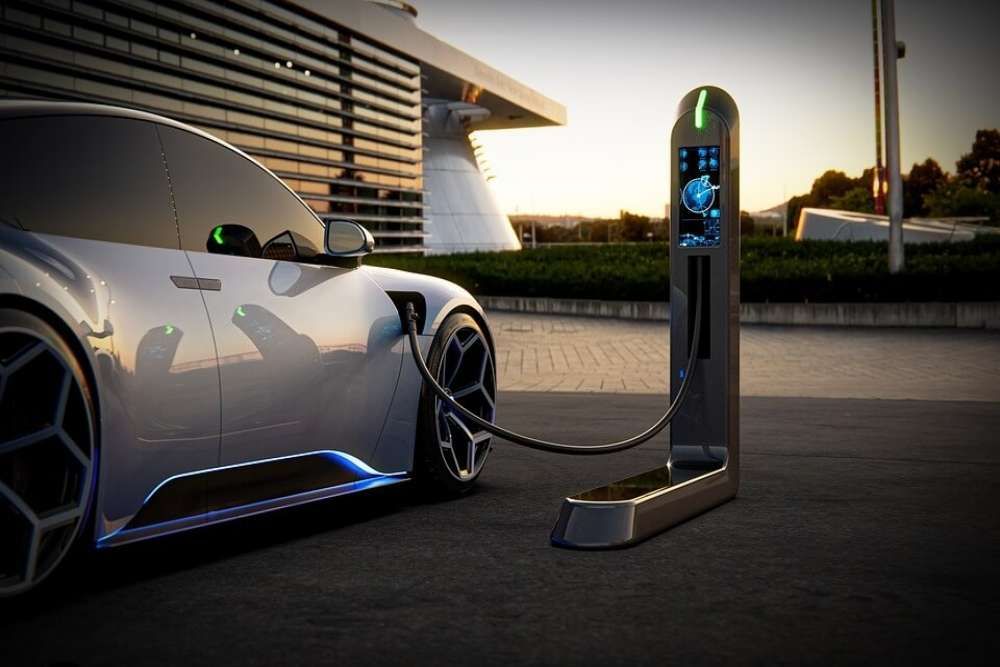
Things to Consider When Buying an Electric Vehicle (EV)
Purchasing an Electric Vehicle (EV) involves several important aspects to consider, ensuring you make an informed decision aligned with your needs and preferences. Here are key aspects to consider:
- Types & Range: Electric Vehicles (EVs) encompass Battery Electric Vehicles (BEVs), which rely solely on battery power, Plug-in Hybrid Electric Vehicles (PHEVs), combining battery power with an internal combustion engine, and Hybrid Electric Vehicles (HEVs), utilizing both battery and engine power for propulsion. Evaluate the vehicle's range on a single charge to ensure it meets your typical driving needs. Consider factors like commute distance, available charging infrastructure, and potential long trips.
- Charging Infrastructure: Assess the availability and accessibility of charging stations in your area, including home charging options. Consider the types of chargers compatible with the vehicle and their charging speeds.
Understand the charging time required for different charging levels (e.g., Level 1, Level 2, DC fast charging) and how it aligns with your charging habits and lifestyle. - Cost: Compare the upfront cost of the EV with traditional gasoline vehicles, factoring in potential incentives, tax credits, and long-term savings on fuel and maintenance costs.
- Performance: Test drive the EV to evaluate its acceleration, handling, and overall driving experience. Consider factors like regenerative braking, torque, and responsiveness.
- Battery Life and Warranty: Inquire about the battery's expected lifespan, degradation rates over time, and warranty coverage. Understand the manufacturer's policies regarding battery replacement or repair.
- Maintenance: EV maintenance costs are generally lower than traditional vehicles due to fewer moving parts, no oil changes, and regenerative braking reducing brake wear. Routine maintenance may include tire rotations, brake fluid checks, and occasional battery inspections. Overall, EV maintenance costs are estimated to be 35-40% lower than internal combustion vehicles.
- Model Options: Research available EV models, considering factors like size, features, and brand reputation. Compare specifications, reviews, and user experiences to find the best fit for your lifestyle.
- Resale Value: Consider the vehicle's resale value and depreciation rate over time. Evaluate historical data and market trends to gauge future resale potential.
- Environmental Impact: Assess the environmental benefits of switching to an EV, including reduced greenhouse gas emissions and dependence on fossil fuels. Consider the lifecycle emissions of the vehicle, including manufacturing and energy sources.
By considering these aspects comprehensively, you can make a well-informed decision when purchasing an EV, ensuring it meets your requirements for cost-effectiveness, performance, convenience, and sustainability. Additionally, consulting with EV experts, reading reviews, and seeking advice from current EV owners can provide valuable insights to guide your decision-making process.
EV Types & Range
Electric Vehicles (EVs) can be broadly classified into three main types based on their power source and drivetrain technology. Each type offers different benefits and is suited to different needs and preferences.
| Pure Electric (EV) |
Plug-in Hybrid Electric Vehicle (PHEV) |
Hybrid Electric Vehicle (HEV) |
| An Electric Vehicle (EV) is a vehicle propelled by one or more electric motors, using energy stored in rechargeable batteries. Unlike conventional vehicles that run on gasoline or diesel, EVs emit no tailpipe pollutants, offering a cleaner alternative for transportation. They are known for efficiency and reduced greenhouse gas emissions. | A Plug-in Hybrid Electric Vehicle (PHEV) combines a battery-powered electric motor with a traditional internal combustion engine. It can be recharged by plugging into an external power source and by the engine when driving. PHEVs offer greater driving range than pure electric vehicles, using electricity first, then gasoline. | A Hybrid Fuel Cell Vehicle combines fuel cell technology, which uses hydrogen and oxygen to produce electricity, with a battery that can store electrical energy. This hybrid approach enhances efficiency and extends driving range, allowing for quick refuelling with hydrogen and leveraging battery power for additional energy storage and management. |
| Range: Est. 300km – 500km |
Range: Est. 600km – 1000km |
Range: Est. 500km – 700km |
|
Charging time: 15min-20hours |
Charging time: 15min-7hours |
N/A |
Charging Plugs
In Australia, the standards for EV charging plugs are focused primarily on two types: AC Charging & DC Fast Charging. These standards facilitate a broad compatibility across EVs available in Australia, ensuring that drivers have access to convenient charging options whether at home, work, or on the road.
|
Charge Type |
Typical applications |
Charge Rate |
Time to charge 100 km |
|
Level 1 – AC |
Home |
2.2 – 3.6 kW |
7 Hours |
|
Level 2 – AC |
Home, Work, Car Park, or shopping mall |
3.6 – 22 kW |
2.2 Hours |
|
Level 3 – DC |
Fast charging stations. |
25 – 350 kW |
3 - 40 mins |
Two types of EV charging plugs that are becoming increasingly popular globally are the Type 2 (Mennekes) connector for AC charging and the CCS 2 (Combined Charging System) Type 2 for DC fast charging. These standards offer versatility, compatibility, and high charging speeds, facilitating the widespread adoption of electric vehicles.
|
AC Slow & Fast Charging |
Type 1 |
Type 2 |
GB/T
|
Tesla AC & DC (popular) |
|
DC Fast Charging |
CCS 1 |
CCS 2 (popular) |
GB/T |
CHAdeMO |
Charging Infrastructure and Network:
The EV charging infrastructure and network comprise a growing global ecosystem of public and private charging stations, including slow, fast, and ultra-fast chargers. Networks like ChargePoint, Tesla Superchargers, and BP Pulse offer diverse charging solutions, supported by apps like PlugShare for navigation. This infrastructure is vital for supporting the increasing adoption of electric vehicles.
|
Plug Share |
PlugShare is a comprehensive platform that maps electric vehicle (EV) charging stations globally, allowing users to find, review, and share details about charging locations. It facilitates EV travel by providing information on charger types, locations, availability, and user feedback, enhancing the EV driving experience through community-driven insights. |
|
Chargefox |
Public EV charging networks, offering ultra-rapid and fast charging stations across major highways and cities. Chargefox stations support both CCS2 and CHAdeMO connectors. https://www.chargefox.com/ |
|
EVie |
Focuses on deploying ultra-fast charging infrastructure in urban and key regional locations, supporting CCS2 and CHAdeMO standards for fast charging. https://evie.com.au/ |
|
Tesla |
Exclusive to Tesla vehicles, these superchargers provide rapid charging capabilities across a network of stations specifically designed for Tesla models. Some sites are now opening to other EVs with a CCS2 adapter. |
|
NRMA |
Offers its members access to a growing network of fast charging stations across New South Wales and other parts of Australia, compatible with vehicles that use CCS2 and CHAdeMO. https://www.mynrma.com.au/electric-vehicles/charging/ev-charging-stations-australia |
|
Jolt |
Offers free charging sessions (with a daily limit) at its fast-charging stations, primarily located in urban areas. Jolt focuses on making EV charging accessible and affordable. https://jolt.com.au/find-a-charger/ |
|
BP Pulse |
BP Pulse operates a network of EV charging stations located in accessible public areas, such as retail parks, BP service stations, and other strategic locations. These stations often provide a range of charging speeds, including rapid and ultra-fast charging capabilities, to serve different needs. https://www.bp.com/en_au/australia/home/products-services/bppulse/recharge-and-go.html |
|
Ampol |
Through its AmpCharge initiative, Ampol is entering the EV charging space, planning to set up fast charging stations at select fuel stations across the country. |
Battery Technology:
Electric Vehicle (EV) battery technology encompasses various types, including Lithium-ion, solid-state, and Lithium-Iron-Phosphate batteries. Lithium-ion batteries dominate the market due to their high energy density and durability. Solid-state batteries promise improved safety and energy density, while Lithium-Iron-Phosphate batteries offer potential for higher energy storage capacity.
|
Charging Time and Cost:
It is essential to check the charging costs and pricing structures of specific charging stations or networks before using them. Additionally, consider factors such as membership fees, session fees, and any special promotions or discounts offered by charging providers. Overall, the cost of charging an EV is generally lower than fuelling a gasoline-powered vehicle, especially if you can take advantage of off-peak electricity rates or free charging opportunities.
|
A Battery Size (kWh) |
B Charging Rate (kWh) |
C Electricity cost cent/kWh |
Charge Time |
Est. Cost |
|
- |
Range 2.2 – 150 kWh |
Range 30 cents to 75 cents |
A / B |
A x C / 100 |
|
Example: 60kWh |
DC 150 kWh |
55 cents at charging station |
24 mins |
A$33 |
|
Example: 60kWh |
DC 50 kWh |
35 cents at charging station |
1.2 hours |
A$21 |
|
Example: 60kWh |
AC 20 kWh |
35 cents at charging station |
3 hours |
A$18 |
|
Example: 60kWh |
AC 2.2 kWh |
8 cents off-peak & 30 cents * |
27 hours |
A$16.8 |
|
Example: 60kWh |
Typical 5kWh Solar panel generates 20kWh of electricity |
^ May include solar panel initial investment cost. |
3 hours |
A$0 ^ |
All about charging:
Electric Vehicle (EV) batteries exhibit several characteristic behaviours during the charging process, influenced by factors such as battery chemistry, charging infrastructure, temperature, and state of charge. Here are some key charging characteristics:
- Charging Speed: EV batteries can charge at different rates depending on the charging method and infrastructure. Factors such as the capacity of the charger, the battery's state of charge, and the battery management system influence charging speed.
- Charging Curve: EV batteries typically follow a charging curve where the charging rate decreases as the battery approaches full capacity. This curve may vary depending on the battery's chemistry and temperature.
- Temperature Sensitivity: Charging speed and efficiency are affected by battery temperature. Extreme temperatures, both high and low, can reduce charging performance and may require thermal management systems to maintain optimal conditions.
- Regenerative Braking: EVs utilize regenerative braking to recover energy during deceleration, which is then stored in the battery. This feature helps improve overall energy efficiency and extends driving range.
- Charge Limiting: Battery management systems may limit charging at high or low states of charge to protect the battery from overcharging or over-discharging, thereby prolonging battery life.
- Fast Charging: DC fast charging stations can rapidly charge EV batteries, providing a significant amount of energy in a short period. However, frequent use of fast charging may impact battery longevity due to higher charging temperatures and stresses.
- Battery Degradation: Over time, repeated charging and discharging cycles can lead to battery degradation, resulting in reduced capacity and performance. Battery chemistry, charging habits, and environmental factors influence the rate of degradation.
- Smart Charging: Advanced charging systems and smart grid technologies enable optimized charging schedules, considering factors such as energy demand, electricity rates, and renewable energy availability.
Understanding these charging characteristics is crucial for optimizing EV charging strategies, maximizing battery life, and ensuring efficient and reliable operation of electric vehicles. Manufacturers, charging infrastructure providers, and regulatory agencies continue to develop and implement technologies and standards to enhance EV charging capabilities and address evolving user needs.
Battery life and warranty:
Most electric vehicles (EVs) come with 8 to 10-year warranties on batteries and motors, but they are expected to last about 15 years, degrading gradually. At 75% capacity loss, typically after around 180,000-200,000 km, the battery's lifespan ends. While less efficient for driving, these used batteries still hold significant energy, repurposed for stationary storage in homes and grids for another decade. Eventually, they are recycled, improving efficiency with advancements aiming for a closed-loop system. The EU aims to recycle 70% of lithium-ion batteries by 2030, while the US also promotes battery recycling. Governments are likely to implement more sustainability policies as the EV industry grows.
Environmental Impact:
Electric Vehicles (EVs) reduce air pollution and greenhouse gas emissions during use but pose environmental challenges in battery production and disposal, including resource depletion and pollution. Mitigation efforts focus on sustainable sourcing, recycling, and renewable energy adoption.
Example: CO2 emission to produce 1KW of electrical power
|
Coal |
Natural Gas |
Oil |
Nuclear |
Renewables |
|
0.9 - 1.1kg |
0.4 – 0.6kg |
0.7 – 0.9kg |
0.01kg |
Close to zero |
|
Car Types |
CO2 emissions / km |
CO2 emissions / km with clean energy like solar |
|
Small Electric |
100g # |
56g * |
|
Medium Electric |
121g # |
74g * |
|
Small Petrol |
247g^ |
NA |
|
Medium Petrol |
279g^ |
NA |
# CO2 emissions by (Electric lifecycle + battery production + vehicle production - recycling)
* CO2 emissions by (Electric lifecycle + battery production + vehicle production - clean energy - recycling)
^ CO2 emissions by (Fuel lifecycle + vehicle production - recycling)
Government incentives/Rebate:
The Australian government offers several incentives and rebates to promote the adoption of Electric Vehicles (EVs) and support the transition to cleaner transportation. Some of these incentives include:
- Electric Vehicle Subsidies: Some states and territories offer financial incentives, such as rebates or subsidies, to encourage the purchase of electric vehicles. These subsidies typically apply to both battery electric vehicles (BEVs) and plug-in hybrid electric vehicles (PHEVs).
- Stamp Duty Exemptions: In certain jurisdictions, EV purchasers may be eligible for exemptions or reductions in stamp duty fees, reducing the upfront cost of buying an electric vehicle.
- Registration Discounts: Some states offer discounts or exemptions on vehicle registration fees for electric vehicles, further reducing ownership costs.
- Charging Infrastructure Grants: Government programs may provide funding or grants to support the installation of electric vehicle charging infrastructure, including home chargers, workplace charging stations, and public charging networks.
- Fleet Incentives: Government initiatives may offer incentives or grants to encourage businesses, organizations, and government agencies to electrify their vehicle fleets by purchasing electric vehicles.
- Carbon Emissions Reduction Targets: Various government policies and targets aim to reduce carbon emissions from transportation, incentivizing the adoption of electric vehicles as a cleaner alternative to internal combustion engine vehicles.
It is important to note that specific incentives and rebate programs vary by state and territory in Australia, and eligibility criteria may apply. Additionally, government policies and programs are subject to change over time as new initiatives are introduced or existing ones are updated. Therefore, individuals interested in electric vehicles should research the latest incentives available in their area and consult with relevant authorities or organizations for the most up-to-date information.
Useful links
https://electricvehiclecouncil.com.au/evs-available
https://www.accesscanberra.act.gov.au/driving-transport-and-parking/registration/incentives-for-low-and-zero-emissions-vehicles#Incentives-for-zero-emissions-vehicles
https://evse.com.au/blog/government-ev-schemes-across-australia/
https://www.drive.com.au/caradvice/government-incentives-for-electric-cars-australia/
https://www.qrida.qld.gov.au/program/queensland-zero-emission-vehicle-rebate-scheme
https://www.nsw.gov.au/driving-boating-and-transport/nsw-governments-electric-vehicle-strategy/ev-rebates
https://www.racv.com.au/royalauto/transport/electric-vehicles/electric-car-discounts-government-incentives-australia.html
https://electricvehiclecouncil.com.au/a-z-charging/
https://www.cleanercars.gov.au
Once you've found the right car, the next step is sorting out car finance that actually works for your budget. Credit One is Australia's best-reviewed finance broker, with 3,000+ five-star Google reviews from customers who've been through the process. Check out Credit One reviews to see what people say, or head straight to the loan repayment calculator to see what the numbers look like.







